Patch Budding Pecans
Patch budding may be used on small tree trunks or branches 3/8 to 1 ½ inches in diameter. Larger trees that have been cut back may also be patch budded by placing the bud on young vigorous sprouts forced into growth near the cut end of the limbs. Trees cut back in one dormant season may be patch budded in the spring of the following season.
This propagation technique is used in the spring or late summer. Budwood, which has
grown during the previous growing season, is used in the spring. It is collected in
winter (late December through February) while the trees are dormant and kept in cold
storage until budding season. Consult HLA-6217 “Collecting and Storing Pecan Propagation Wood” for instructions.
Current season’s buds are sufficiently mature and available for patch budding by the
middle of July under average Oklahoma conditions.
The two seasons for budding vary from each other as follows:
- Spring Budding – The bark of dormant budwood must be seasoned to induce slipping. The wood must be removed from storage prior to propagation and seasoned so that the bark will slip. This can be done by packing it in moist media such as sawdust and storing at room temperature or above (up to 80° F to 85° F) for four to seven days or until the bark slips readily. Always keep the wood moist. Use the budwood soon after it is seasoned. Buds from over seasoned wood usually give poor results. Where trees of the desired varieties are nearby, two-year-old wood on vigorous trees usually contain dormant buds as late as May or early June. These buds can be removed and used for patch budding at that time. This is another procedure for spring budding. It eliminates the collection and storing of dormant budwood in late winter and artificial slipping of the bark.
- Late Summer Budding – Current growth is used disposing of the leaf stalk, found immediately below each bud. Precaution – From the time the first cuts are made until wrapped, the wounds should not be exposed to sunlight or wind any longer than absolutely necessary. Keep the budwood stored in an ice chest or wrapped in a damp material such as burlap to prevent drying. Handle budwood carefully; avoid unnecessary rubbing, bruising, or splitting of the patch containing the bud.
Definitions:
Scionwood – (Budwood, Graftwood, Propagation wood) mature dormant shoots usually of the previous season’s growth. Consult HLA-6217 “Collecting and Storing Pecan Propagation Wood.”
Stock – A trunk or limb on which the scion is budded.
Cambium – A thin layer of cells located between the bark and wood; capable of dividing and
forming new cells. For a successful graft union, it is essential that the cambium
of the scion be placed in close contact with the cambium of the stock.
Callus – A mass of cells that develop from and around wounded plant tissue. It occurs at
the junction of the graft union, arising from the cambium of both scion and stock.
What you need:
Stock trees — Select healthy, vigorous trees measuring one to four inches in diameter where the scion, or graft, will be set.
Budwood — cut your own scions from desirable varieties from dormant wood and keep in cold
storage until used; or, see your county Cooperative Extension educator for sources
where suitable budwood can be purchased or online at okpecans.okstate.edu/PDFs/graftwood-source.
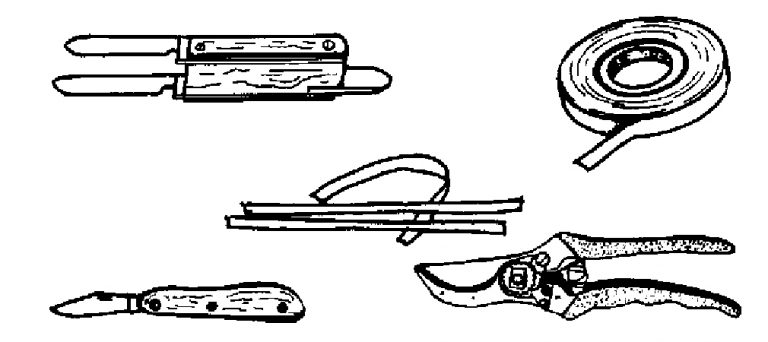
Tools and Supplies. sharp twin-bladed knife; grafting or budding tape, masking tape, hand shears, and a sharp grafting knife.
Procedures:
1. Double cut the budwood. Center a plump, healthy looking bud between the budding knife blades. Begin on the left side of the bud and with firm pressure rotate the knife to the right. Make the double cut through the bark and approximately 1 ½ inches long.
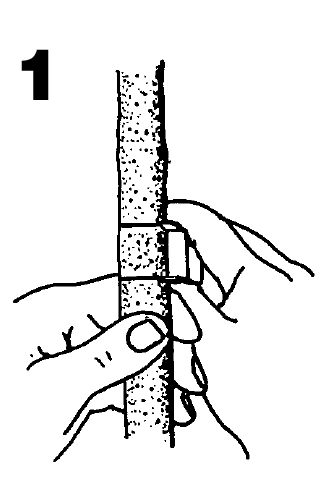
2. Double cut the stock. Select a smooth, convenient location on the stock. Make a double cut approximately 1 ½ inches long, by rotating a double‑bladed budding knife around the stock.
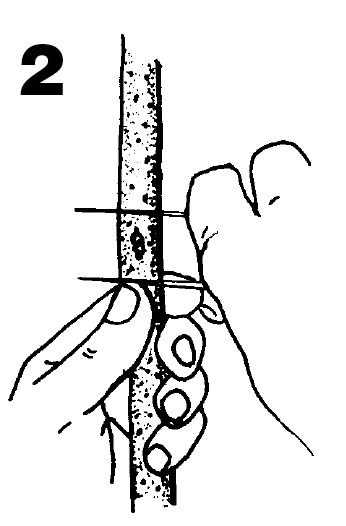
3. Complete preparation of stock. Connect the double cut on the right side with one perpendicular cut. This can be done with one of the budding knife blades or a single‑bladed knife.
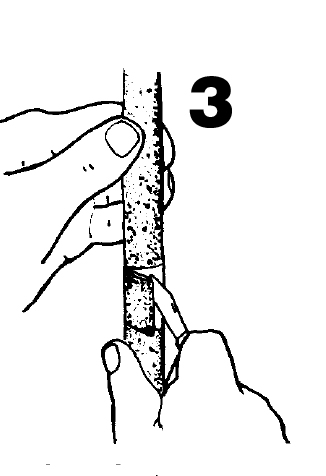
4. Raise the bark on the stock with a flip of the knifepoint or the tongue attached to the butt end of some budding knives.
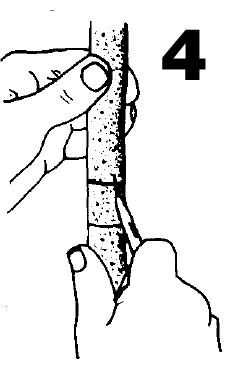
5 and 6. Complete preparation of the patch for removal from the budwood. Connect the double cut on both sides of the bud with two perpendicular cuts. Loosen the patch containing the bud at all four corners with the knife point. Hold the patch with the bud located between the left thumb and index finger. Twist the left hand toward either direction. With the right hand, rotate the budstick in the opposite direction.
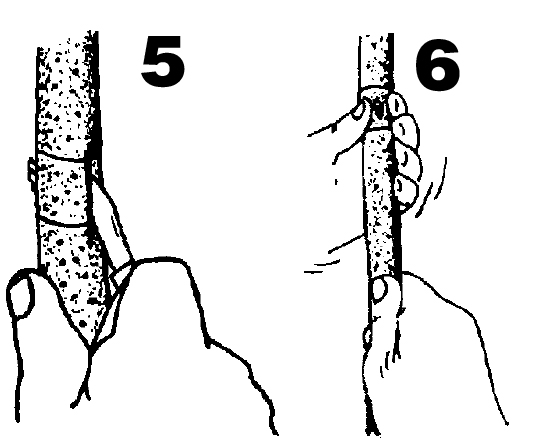
7. Transfer the patch from budstick to stock. When completely loosened, pick up the patch containing the bud between the knife and thumb or finger and thumb and quickly place in the matrix on the stock flush with the right side of the connecting (perpendicular) cut made on the stock. The bark flap on the stock is then creased and torn or cut to fit the patch. A slight overlap of the bark flap over the patch can be left.
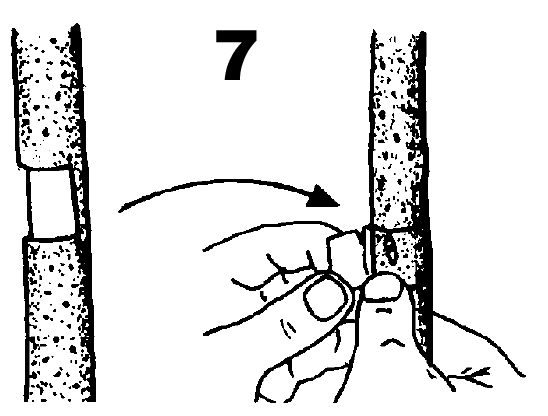
8. Seal the patch. Wrap with polyethylene plastic budding tape, rubber budding strips, or masking tape. Several other materials, such as waxed cloth and grafting tape, may be used successfully. Pull the wraps firmly and allow them to overlap slightly to seal out excessive air and water and to prevent drying. Cover all exposed areas well. Allow the bud to show through between the wraps.
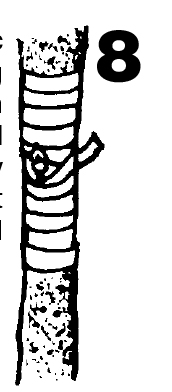
Some Additional Tips
- Two or three weeks after insertion of the bud, determine if the patchbud is green by nicking it lightly with a knife point.
- Good judgement is required at this time to determine whether to force the live buds then or the following spring. Buds inserted by mid-June and well united to the stock are commonly forced the same season. Others may be forced the following spring.
- To force transplanted buds, cut off the stock six or eight inches above the bud. This "stub" will serve as a support to which the young shoot arising from the bud can be tied. Do not allow growth to develop on this section of the stock during the first growing season. At the end of the first growing season, the stock can be cut off smooth, immediately above the new shoot.
Becky Carroll
Senior Agriculturalist, Fruit Physiology
